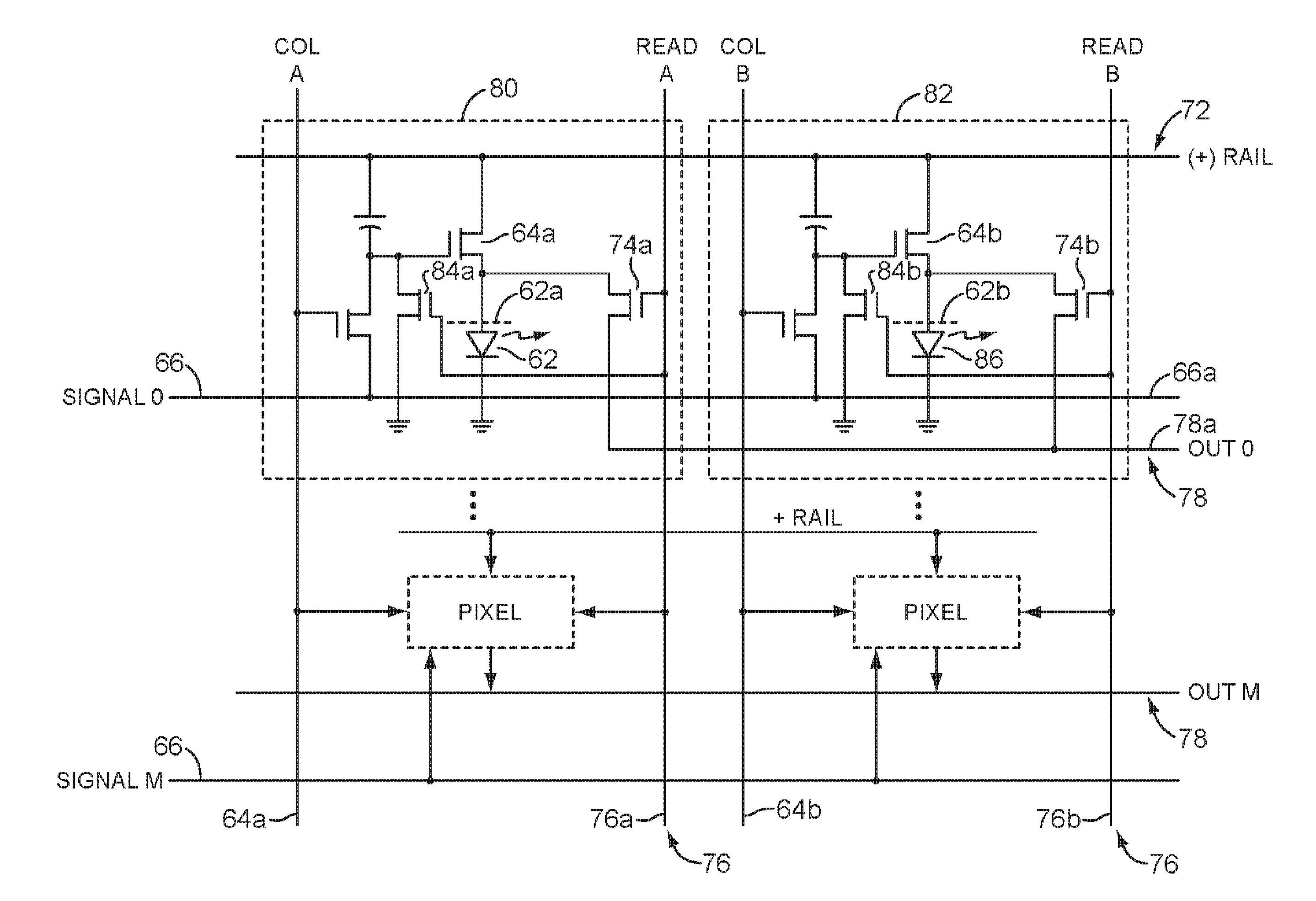Flat Panel Display Screen Operable For Touch Position Determination System And Methods
a flat panel display and position determination technology, applied in the field of touch screen technology, can solve the problems of insufficient frequency to achieve the high sampling rate necessary for position sensing of large modern displays with rapidly changing images, and affecting the image quality of large displays. achieve the effect of integrating touch sensitivity, reducing power consumption, and enabling touch sensitive features
- Summary
- Abstract
- Description
- Claims
- Application Information
AI Technical Summary
Benefits of technology
Problems solved by technology
Method used
Image
Examples
Embodiment Construction
[0050]In the following description, for the purposes of explanation, numerous specific details are set forth in order to provide a thorough understanding of the various aspects of the present invention. It will be obvious, however, to one skilled in the art that the present invention may be practiced without these specific details. In other instances, well known structures and devices are shown or discussed generally in order to avoid obscuring the present invention or making the specification unnecessarily long. In that regard, in order to further shorten the specification, numerous existing patents and publications are discussed and incorporated by reference above and below. It should be noted that there exist many different display system configurations and technologies to which the present invention may be applied and that, while exemplary preferred embodiments are used to illustrate and explain the various aspects of the invention, application of the various aspect of the inven...
PUM
 Login to View More
Login to View More Abstract
Description
Claims
Application Information
 Login to View More
Login to View More - R&D
- Intellectual Property
- Life Sciences
- Materials
- Tech Scout
- Unparalleled Data Quality
- Higher Quality Content
- 60% Fewer Hallucinations
Browse by: Latest US Patents, China's latest patents, Technical Efficacy Thesaurus, Application Domain, Technology Topic, Popular Technical Reports.
© 2025 PatSnap. All rights reserved.Legal|Privacy policy|Modern Slavery Act Transparency Statement|Sitemap|About US| Contact US: help@patsnap.com



